Leap Day gives me one more chance to write a blog post in February this year, and also one more chance to show a game from the U.S. Amateur Team West.
Yesterday I recorded a ChessLecture about Todd Rumph’s game in round six of the tournament, where he saved a draw from a position where he was down an exchange for a pawn. I am planning to do another lecture about Julian Chan’s save a round earlier, where he held a an endgame that our fearful leader Robin Cunningham had given up for lost.
But probably our most remarkable save came in round 4, where Steven Gaffagan actually won a position where he was a full exchange down for the last 15 moves. I’m not going to give a ChessLecture on this one because I don’t really have much to add to Steven’s own comments, which are given in the PGN below. So instead I will present the game here!
The opening, as you can see, was a sort of Hedgehog where the white-squared bishops are off the board. Overall I think that benefits White in this position, because it creates a big weakness on c6 that Black obviously did not sufficiently appreciate.
White to play.
The other important feature in this position is the rather unfortunate position of Black’s rooks on b8 and d8. The combination of this factor and the weak square on c6 gives White an immediate way to play for an advantage.
24. b4! Ncd7
Here Steven notes that he could have avoided material loss with 24. … e5, chasing the knight away before it can get to c6. However, 24. … e5 has obvious positional drawbacks (the backward pawn on d6 and the hole on d5), so it is hard to play this sort of move in a game.
25. b5 Ne5
Trying to defend c6, but unfortunately the knight can’t stay there.
26. f4 Nxg4 27. Nc6 h5
A nice alert move for Black, solidifying the position of his knight on g4.
White to move.
Looking at this position, it’s hard to believe that White could possibly lose the game! And yet here is where White already starts to go astray. I think that the psychological problem in this position is that White’s position appears so dominant that he relaxes here and does not look for little subtleties that could make a difference.
The obvious move is to grab the exchange, and that is what White did. But there is no rush to do so! The computers (both mine and Steven’s) strongly prefer the move 28. Bxd6 first. What is the point? Well, I think the main point (which is not given in Steven’s analysis) is that after 28. … Ra8 (or c8) 29. Nxd8 Rxd8 White is a tempo ahead of the game, and he can use this tempo very effectively with 30. e5. A secondary point (which to the computers is the main point) is that if Black plays … Rxd6 White has managed to win the exchange and maintain his dominating knight on c6.
But in a position where he was going to win a decisive amount of material, White did not care about such minor details as winning a tempo. He played
28. Nxd8 Rxd8 29. Rxd6 Rxd6 30. Bxd6 ab 31. e5 Ne8 32. Nxb5 Nxd6 33. Nxd6 Qc6
White to play.
In principle White is still in fine shape here. However, the position contains the seeds of disaster. Public enemy number 1 for White is that Black knight on g4, which cannot be driven away and looms threateningly over White’s king. Public enemy number 2 is the Black queen, which has many ways to invade White’s position, starting with … Qc5+. The tandem of the Black queen and knight working together, as we shall see, can be very dangerous.
Here it was absolutely essential for White to have what the GM’s call “a sense of danger,” and realize that his position could turn very sour very fast. He has so many weak squares that his queen and rook cannot defend them all, and he needs the help of the knight. He absolutely has to play 35. Ne4 here, preventing … Qc5+ and shoring up the defense of his weak dark squares like f2 and g3.
But psychologically, White was not ready to do this. He is still too impressed by the glory of his knight on d6 and is not ready to sound the retreat. Instead he plays what looks like a clever move but is in fact a disaster:
34. c5? …
After this move, according to Rybka, White’s advantage has completely evaporated! White’s idea was to force Black to block the a7-g1 diagonal with his own pawn, and he assumed that White would be able to win back the lame c-pawn any time he wants.
Steven deserves tremendous credit for figuring out what is wrong with this plan.
34. … bc 35. Qe4 Qa6!
White to move.
If White’s “sense of danger” wasn’t tingling earlier, it definitely should be now. It turns out that closing the a7-g1 diagonal hasn’t done anything to stop the leaks in White’s position. The poor queen and rook are left to scramble around, trying to plug all the holes. A plausible possibility for White would be 37. Qc4 Qa3 28. Rc3, yet this fails utterly to 28. … Qb2. Look at how dangerous the position is for White once the queen gains the second rank! Black threatens mate in 2! And if 29. Rc2 Qb1+ 30. Kg2? Ne3+ is a precursor to what actually happened in the game.
So White plays what I would have played: 36. a4 Qa5 37. Rc2. And now Black comes up with the most striking move of the game. You really should take time to see if you can find the key resource in this position.
Black to play and (at least) equalize.
The key idea is that Black needs to create open lines to invade White’s position. White has just barely managed to defend all the weak points: the queen defends b4 and e1, while the rook defends c3 and d2. But they are terribly overloaded! One strong gust of wind is all it takes to knock over this house of cards.
Last chance to solve it yourself before I reveal the answer…
37. … c4!
I always love this sort of move! The pawn moves to where three different White pieces can take it, but all three moves are bad. If the knight takes, Black can simply snatch the a-pawn. If the queen takes, 38. … Qe1+ wins instantly. So White plays:
38. Rxc4
and now Black can invade with 38. … Qd2=. Instead, Steven played 38. … Qb6+, which is also good. For some reason Steven wrote “box,” a symbol that means this is Black’s only good move. I have to disagree with that annotation. Rybka confirms that either one of these two moves leads to a draw.
Now the game continued 39. Qd4 Qb1+ 40. Kg2 Qe1 (all roads lead to Rome, or in this case, White’s king) 41. Rc8+ Bf8 42. Ne4 Qe2+ and now White commits his final, fatal mistake.
White to play and lose.
As Steven points out in his notes, White has to play 43. Kg1 or Kg3, when 43. … Ne3 is not check and White therefore has time to save himself with 44. Rxf8+! forcing a draw by perpetual check.
Instead White played 43. Nf2?? Ne3+ and it’s too late for White to save himself. Any king move other than Kg3 leads to checkmate, and after 44. Kg3 (which is what White played) Nf5+ forks the king and queen. White resigned.
I think the reasons for White’s debacle were purely psychological. He simply could never wrap his brain around the fact that he was in danger. Even in the position on move 43, when he can still save a draw by sacrificing his rook, he was too proud to do it.
It’s possible also that the team format may have had an influence on the result. By move 43, two of the games were over and our team was leading 1½ – ½. If White looked at my game, he saw a position that looked most likely to be a draw. So on the mental scoresheet, it looked as if his team was going to be behind 2-1, and so he needed to play for a win. However, I’m not sure that really excuses his blunder on move 43, because it should have been evident that 43. Nf2? loses.
As it turns out, I unexpectedly lost my game in a time scramble. So in fact, if White had managed to draw this game, the match would have been tied and the whole tournament would have been different!
But “what ifs” are for losers. Congratulations to Steve for pulling out this amazing victory and winning the match for our team!
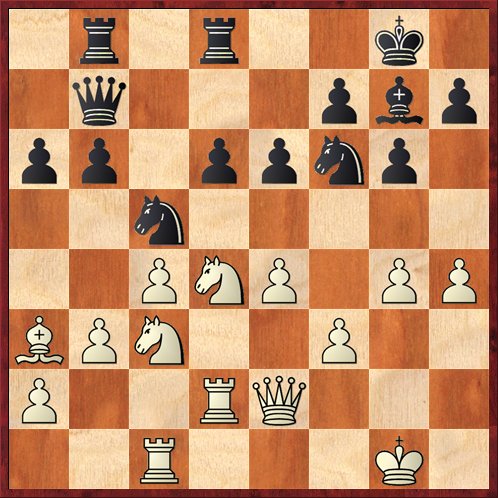
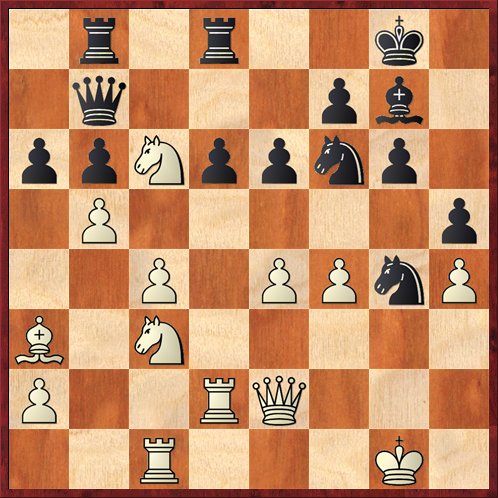
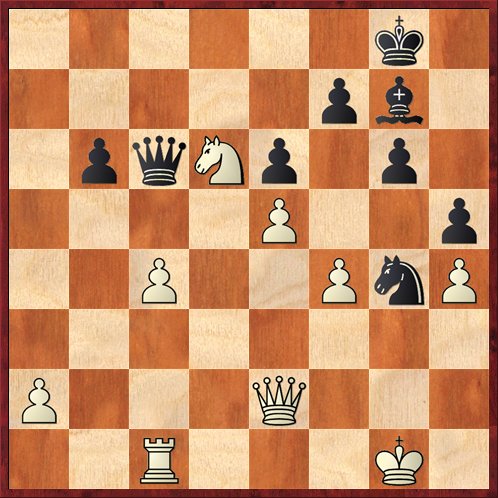
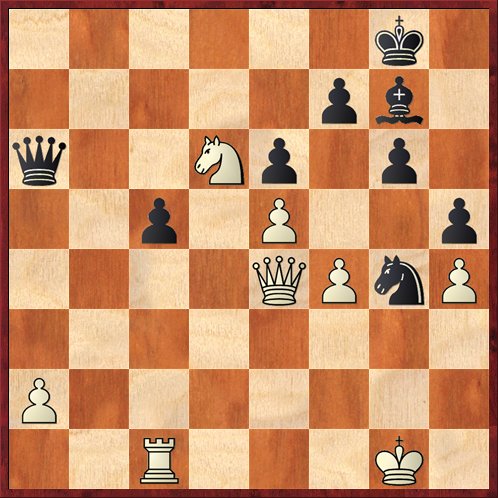
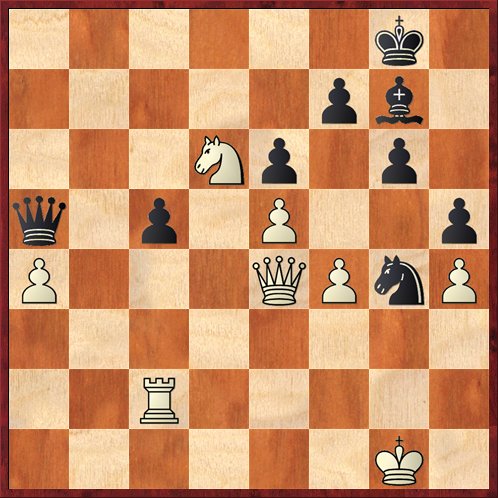




{ 4 comments… read them below or add one }
Someone named Timofeev should be rated at least 2650!
Hi Dana, do you plan to record any more “Learn from Your Fellow Amateurs” lectures? It’s one of my favorite series on ChessLecture.com and I would always look forward to it each month. Regardless, the rest of your lectures are almost always excellent… I just wish there were more of them!
Great post. I think many of us would prefer to lose the exchange if we could grab a diagonal or squares (especially, if you’ve got an aggressive streak, as I suppose Steven does …). The tactics towards the end were difficult and crisp. But then again, the exchange is overrated :).
On a lighter note… Cute chess video!
http://www.youtube.com/watch?v=P-77Ub6lerY